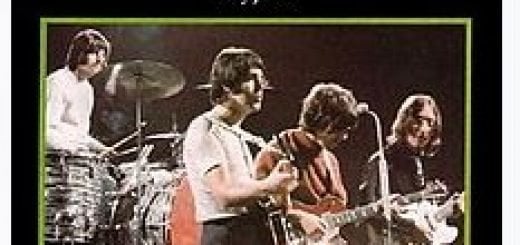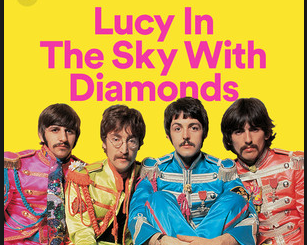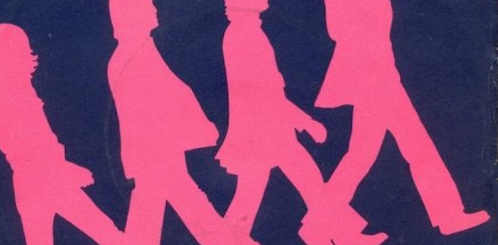Meaning of “Twist and Shout” by The Beatles
“Twist and Shout” is an American classic, one that first became a hit via a rendition released by The Isley Brothers in 1962. The Beatles’ version came out shortly thereafter, on 22 March 1963. It was supported by Parlophone Records in the UK. In the United States, it was backed by Tollie Records.
The Fab Four’s rendition actually appeared on their debut album, 1963’s “Please Please Me”. And it also served as the title track to a project they dropped the following year.
The Beatles’ version of “Twist and Shout” has been applauded by professional music critics as being historically great. Furthermore, it may, to some degree, be considered the Fab Four’s breakthrough song.
For instance, it is the earliest entry in their discography to have achieved BPI platinum status. It also marked only their third song at the time to go platinum stateside. The Beatles’ “Twist and Shout” also proved to be a chart topper on the following listings:
- Cash Box Top 100 (United States)
- Lever Hit Parade (New Zealand)
- Official Finnish Chart (Finland)
Furthermore, it reached the second place on the Billboard Hot 100. This was not the band’s first hit but may have been the one which cemented their status as enduring music stars.
The band also scored a top-10 hit with this song in the following countries:
- Australia
- Canada
- Netherlands
- Norway
- Spain
- Sweden
- Germany (West)
Who wrote “Twist and Shout”?
The writers of this song were Phil Medley (1916-1997) and Bert Berns (1929-1967). Their inspiration was Chubby Checker’s “The Twist” (1960), a historical classic which proved very popular when it dropped.
Recording Process
‘Fifth Beatle’ George Martin (1926-2016) produced this track. The track’s lead singer was Beatle John Lennon (1940-1980).
As the story goes, The Beatles were only able to lay down a couple of takes of “Twist and Shout” because, on that selfsame day in February of 1963 at EMI Studios (aka Abbey Road Studios), they had actually recorded 10 songs in total.
And according to Martin, he intentionally had them record this song last, because he knew it was “a real-larynx tearing”, so if they had recorded it first they wouldn’t “have any voice left”. Moreover, Lennon was sick at the time. So they ended up only doing two takes, with the first being the one that stuck.
Indeed, John and the gang really did their thing that day, as nine of those songs they recorded ended up making the playlist of “Please Please Me”.
The B-side to “Twist and Shout” is a track titled “There’s a Place”. Interesting to note is that this B-side track itself managed to appear on the Billboard Hot 100.
Appearance in Movies
US movie fans of the 1980s were reintroduced to this song via a couple of notable flicks. One was 1986’s Back to School. In this movie, the star of the show, comedian Rodney Dangerfield (1921-2004), covered “Twist and Shout”.
A couple of days prior to that movie being released, Ferris Bueller’s Day Off, one of the defining films of the decade, also came out. And therein Matthew Broderick, the lead actor, brilliantly lip-synced this song. Resultantly, The Beatles’ “Twist and Shout” did reappear on the Billboard Hot 100 (and Canada Top Singles) in 1986.
More Interesting Facts
The original act to drop a rendition of “Twist and Shout” was a short-lived R&B outfit called The Top Notes, who did so in 1961. Therefore, The Beatles’ version is technically a cover of that original (though more specifically, the Fab Four emulated The Isley Brothers’ version).
You may have noticed that while documenting the chart history of this track earlier, we did not mention the UK Singles Chart. That’s because The Beatles’ “Twist and Shout” did not, upon original release, make it onto their hometown list. But it did nearly 50 years later. This happened in 2010, upon first being made available on iTunes.
This song was a mainstay during The Beatles’ live performances of their earlier years, where they tended to use “Twist and Shout” as their closing number. They did so quite famously while appearing on The Ed Sullivan Show in February of 1964. And a rendition they laid down on a late-1963 episode of The Royal Variety Show can be found on their “Anthology 1” album of 1995.
The Beatles also had been performing “Twist and Shout” for some months before recording and eventually dropping their cover. The first of such performances that is actually known to the public is one they rendered in late-November 1962 to be featured on a BBC radio program called Talent Spot.
“Twist and Shout” had proven to be “the band’s biggest crowd-pleaser”, which is why they decided to officially record it in early 1963.

The Lyrics of “Twist and Shout”
From a lyrical standpoint, it’s easy to see how a song like “Twist and Shout” may be considered an American standard. But why is it an American standard? We hear you ask. This is because even to this day, some 60 years later, musicians are still dropping songs based on this exact same theme/storyline.
In fact, “twist-themed” songs are now, in a way, more ubiquitous than they’ve ever been. But these days we tend to refer to them more along the lines of booty-shaking tracks, i.e. being more focused on a particular part of the female anatomy.
That is to say that unlike the 1960s, the popular dance songs of today tend to be more sexualized. But there are general similarities. For instance, by referring to the intended addressee as “baby”, it is established that the lyrics of “Twist and Shout” are aimed specifically at females. This is something we commonly find in contemporary dance songs.
And what they’re being instructed to do is “shake it up”. This is a somewhat harmless expression within the general context of dancing. However, it is an expression that can be interpreted as alluding to certain body parts when being relayed directly to females, as with today’s music.
“Well, shake it up, baby, now (Shake it up, baby)
Twist and shout (Twist and shout)
C’mon, c’mon, c’mon, c’mon, baby, now (Come on, baby)
Come on and work it on out (Work it on out)”
We also find the vocalist admiring the addressee as she is dancing, stating that she “look(s) so good”. That may not be the same level of gawking we are accustomed to via 21st century artists. However, it possesses the same general sentiment, i.e. a dude deriving pleasure from watching a “little girl” gyrate.
There’s also bit of a dirty-dancing element involved. We say this because the vocalist is also apparently boogying and in the process wanting to get physically closer to the addressee. He is doing this all in the name of verifying that she is his own. In other words, this lady is a romantic interest and one who John wants to hook up with.
So in the grand scheme of things, there really isn’t much thematic difference between the Beatles’ “Twist and Shout” and, say, a dance song Bad Bunny would drop in the here and now.
But lyrically the presentation of the former is a lot simpler, with the verses sharing structural similarities, if you will, to the hooks of most present-day booty-shaking songs.








